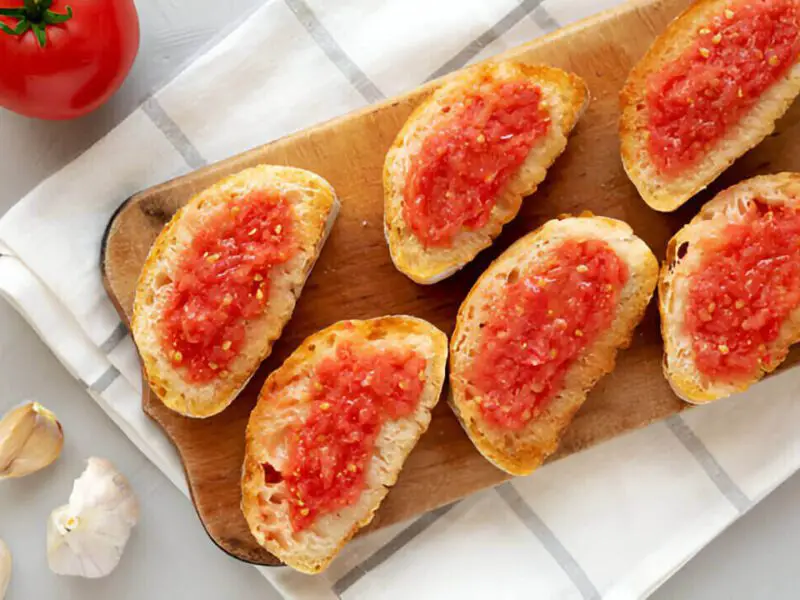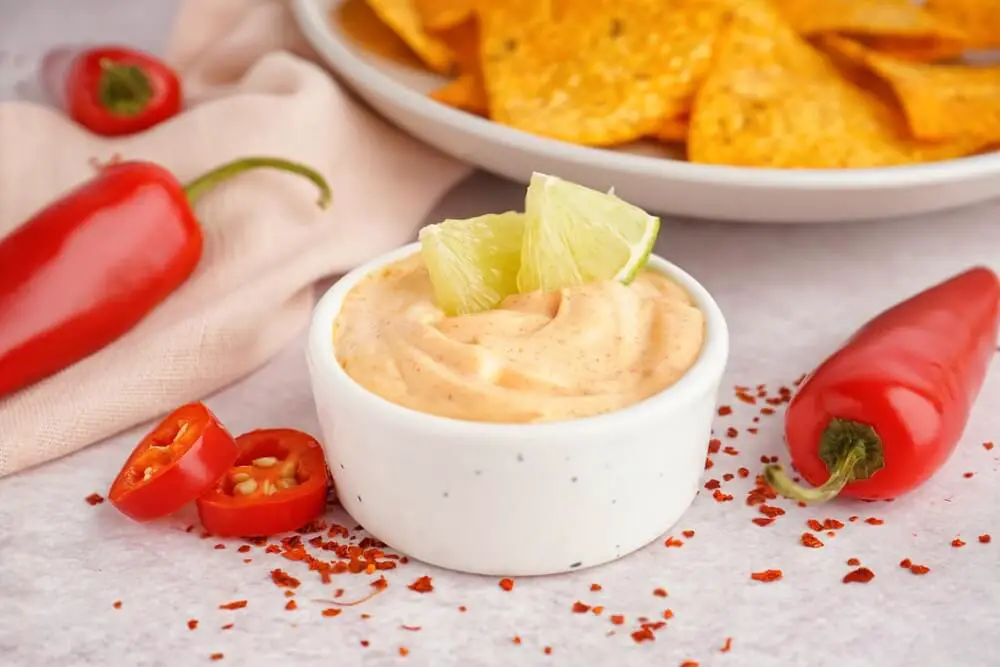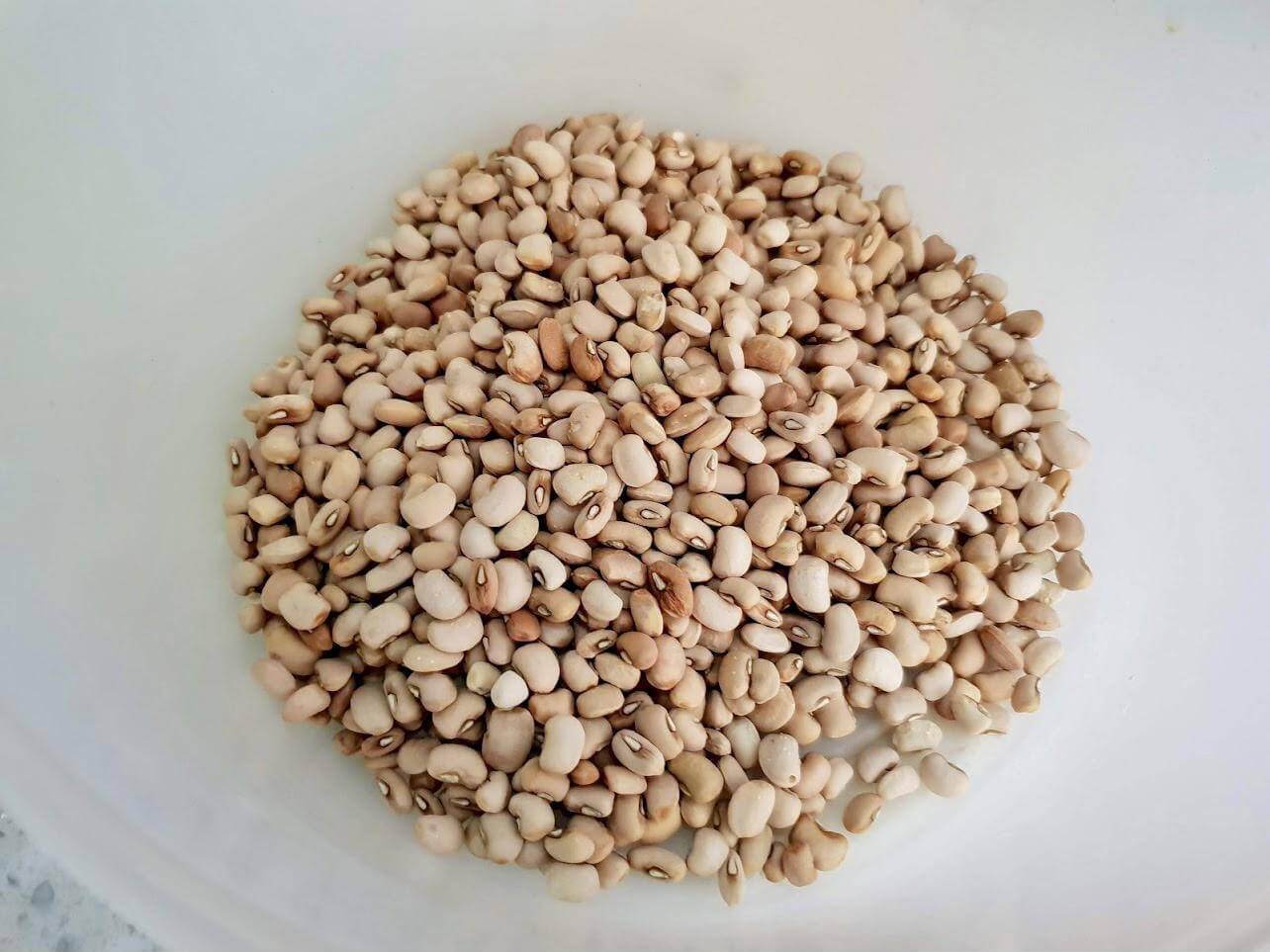You’ve probably seen those tantalizing photos on social media—gorgeous pieces of crusty bread covered in a vibrant red topping that looks equal parts simple and utterly delicious. Or maybe you’ve enjoyed this dish while traveling through Spain, savoring each bite of its garlicky, tomatoey goodness. But do you really know what this Spanish marvel is all about?
Pan con tomate might just look like some tomato-topped bread, but there’s a world of flavor and cultural tradition behind this iconic tapa. Straight from the heart of Catalonia, this humble dish has the power to transform a few basic ingredients into something downright craveable.
So what is pan con tomate that has captured the hearts (and stomachs) of so many? And how can you recreate that rustic, can’t-get-enough taste at home? Get ready to unlock the secrets of one of Spain’s most beloved little bites as we dive into the delectable details.
What Is Pan Con Tomate?
Pan con tomate, also known as “pa amb tomàquet” in Catalan, is a simple but delicious Spanish dish that translates to “bread with tomato.” It’s a staple in Catalan and Spanish cuisine, particularly in regions like Catalonia and Valencia.
Pan con tomate is often served as a tapa (appetizer) or alongside other dishes, especially during the summer months when tomatoes are at their peak freshness. It’s a simple yet flavorful dish that highlights the wonderful flavors of ripe tomatoes and quality olive oil.
Ingredients
At its core, pan con tomate only requires a few simple ingredients. But don’t let that fool you; the quality of those ingredients is paramount to achieving an authentic, flavor-packed result.
Bread
The bread choice is crucial. You’ll want a rustic, crusty loaf with a robust, chewy interior. Some classic options include rustic Spanish or Italian-style loaves like ciabatta, barra de pan, or a weighty sourdough. Avoid soft, flimsy breads that will disintegrate into a soggy mess. The bread should be able to soak up the tomato juices while maintaining enough structural integrity for the toppings.
Tomatoes
Use ripe, juicy tomatoes at their peak season for maximum flavor. Some top choices are butter, beefsteak, or Kumato tomatoes. You want a tomato variety that is fleshy, pulpy, and intensely tasty when raw. Plum or Roma tomatoes tend to be too dry and low in flavor. The tomatoes are the star ingredient, so splurge on the very best you can find.
Garlic
A plump, fresh garlic clove is a must. Steer clear of powdered, jarred, or pre-minced garlic, which can make the bread taste stale or harsh. A single clove rubbed over the toasted bread lends just the right punch of aromatic allium essence.
Olive Oil
Only the best quality extra virgin olive oil will do for drizzling over the prepared bread. A grassy, peppery Spanish olive oil is optimal for channeling those Mediterranean vibes. Avoid oils that are rancid, bitter, or heavily processed.
Salt
Finishing salt like flaky Maldon sea salt or crunchy Jacobsen salt provides a delightful pop of crunch and brine to contrast the tomato’s acidity. Regular table salt will work too if that’s what you have on hand.
Optional Additions
While purists stick to just the core quartet of bread, tomato, garlic, and olive oil, there’s no rule against adding other toppings. A sprinkle of chopped fresh basil or parsley, a drizzle of sherry vinegar, or some thin slices of dry-cured Spanish chorizo or jamón serrano can elevate the flavors even further.
How to Make Pan con Tomate
Now that you’ve gathered your premium ingredients, it’s time to bring pan con tomate to life. While the components are simple, there is an art to coaxing out maximum flavor. Follow these steps for tomatoey bliss.
Prep the Bread
Start by slicing your crusty bread into thick 1-inch slabs. You want hefty pieces that can support plenty of glorious tomato juices without becoming a soggy mess. Give the bread a very light toast or grill over high heat until you get some delightfully charred edges, but the interior is still soft. Don’t over-toast or the bread will be too tough.
Garlic Rubdown
While the bread is still warm from the oven or grill, take your peeled garlic clove and slice it in half lengthwise. Rub the open garlic over the surface of the bread, applying gentle pressure to release the flavorful oils and aromatics into the nooks and crannies. The warmth will allow the garlic essence to delightfully permeate the bread.
The Tomato Technique
Now for the starring step! Slice your tomatoes in half horizontally. Over a bowl or plate, gently rub the cut side of each tomato half over the garlic-brushed bread. Use a firm pressure to release the juice, pulp, and seeds onto the crispy bread. The tomato should start to disintegrate and mash itself right into the surface.
Keep rubbing the tomato evenly over the bread until most of the flesh has been transferred and you’re left with just the tomato skin in your hand. Discard the skins. This process allows the intense essence of fresh tomato to soak deeply into the bread.
Drizzle of Liquid Gold
Time for some premium lube! Generously drizzle your best quality extra virgin olive oil over every nook and cranny of the tomato-saturated bread. The olive oil will mingle with the tomato juices to create luscious moisture.
Sprinkle of Salt
As a final flourish, sprinkle your coarse sea salt over the top of the glistening pan con tomate. The salt crystals will entice your taste buds and draw out all the bright, vibrant flavors.
That’s all there is to it! At this point, you can dig right in with a knife and fork for mess-free eating. Or do as the Catalans do and simply pick up the slabs of pan con tomate with your hands, tearing off bite-sized pieces.
The tactile motion of preparing this simple dish is half the joy. From rubbing the garlic and tomatoes over the bread to drizzling on the olive oil, you’ll engage all your senses. Let those juices run down your fingers—it’s a deliciously rustic experience.
Taste and Texture

At first glance, pan con tomate seems almost too simple to be remarkable. Just bread, tomato, garlic, olive oil, and salt? But sampling this humble Spanish tapa reveals an utterly transcendent combination of flavors and textures.
Let’s start with that all-important taste. A kaleidoscope of sensations dances across your tongue with each bite. There’s the bright, acidic punch of vine-ripe tomatoes at peak season—sweet, juicy, and vibrantly fresh. Their fruity essence is accentuated by a delicate backdrop of pungent garlic aroma woven throughout the bread’s crumb.
Splashes of high-quality olive oil bring a luxurious, velvety richness that coats your mouth and balances the tomato’s acidity. You’ll detect the oil’s nuanced notes of pepper, fresh grass, or ripe fruit, depending on its varietal. A judicious sprinkle of crunchy sea salt enhances every flavor while offering a brilliant savory contrast.
It’s this harmonious marriage of taste—fresh and bright yet decadent and satisfying—that makes pan con tomate so uniquely craveable. Layered and complex yet grounded in those primal ingredients.
Then there’s that all-important texture interplay that seduces every sense. You experience the contrasts from the very first bite. The crispy, shatter-in-your-mouth crust gives way to an impossibly creamy, airy bread interior soaked in those tangy tomato juices. Each ragged tear delivers an enticing trough of olive oil to eagerly sop up.
Running your fingers along the irregular surface reveals a delightfully coarse, almost nubby texture from the dried tomato seeds. You’ll feel those wonderfully crisp bits of sea salt crystals crunch between your teeth. It’s immensely satisfying.
Bringing it all together is that unmistakable, rich aroma wafting upwards—a comforting blend of yeasty bread, intoxicating garlic, and luscious tomato fragrance. You can’t help but pause between bites to revel in those Mediterranean scents.
The very act of consuming pan con tomate is a multi-sensory delight. Grasping those rustic pieces in your hands connects you to their humble, earthy origins. Watching glistening droplets of olive oil drip down your fingers only heightens the indulgence. And hearing those gentle rips and crunches with each bite is immensely gratifying.
This is a dish meant to be experienced with all your senses. To be savored, contemplated, and appreciated with each glorious mouthful. What seems so admirably simple is revealed to be a stunningly complex taste experience.
Regional Roots and Variations
While it may seem like just simple tomato-topped bread, pan con tomate is a true cultural icon deeply rooted in Spanish identity and tradition. This humble tapa reigns supreme in the regions of Catalonia and Valencia, where it has been a beloved way to start meals for centuries.
In Barcelona and throughout Catalonia, pan con tomate is more than just food; it’s an experience intertwined with the local way of life. Stop into any restaurant, café, or lively tapas bar, and you’ll find patrons indulging in these rustic tomato-smeared creations while sipping wine or beer. It’s the ideal accompaniment to kick off a leisurely Spanish meal.
Walk the winding medieval streets and sunny plazas of Barcelona’s Gothic Quarter or the beachside neighborhoods, and you’ll catch wafting scents of garlic, olive oil, and fresh tomato perfuming the air. For Catalans, the very aroma of pan con tomate holds the power to vividly evoke cherished memories and feelings of home.
Neighbors often greet one another while devouring these tomatoey morsels outside local food markets. Makeshift street-side stands offer revitalizing pans con tomate for a quick morning or afternoon snack. It’s as ubiquitous on Catalan tables as bread itself.
Just across the Mediterranean in the Valencia region, pan con tomate takes on a life of its own. Known locally as pa amb tomàquet, it tends to have a thicker tomato saturated layer. Don’t be surprised to find tasty toppingslike cured tuna, olives, or smoky pimentos adorning the Valencian variations.
Venture inland to Aragon, and pan con tomate is served up as a typical farmer’s breakfast. The hearty country bread gets an extra thick tomato schmear to fuel a long day out in the fields. Some versions incorporate dried fruits, nuts, or cured meats for extra sustenance.
Even in taverns and tapas joints in the wineries around Rioja, you’re likely to encounter small bites of tomato toast paired with the region’s acclaimed red wines. Each area puts its signature local spin on this cherished dish.
Luckily, modern transportation allows these regional variations to traverse Spain more easily. Today you can sample all their distinctive nuances without extensive travel, whether it’s the simply adorned Catalan style or the more embellished takes from Valencia or Aragon.
But no matter the specific toppings or preparations, these tomato-drenched breads all channel the rustic, salt-of-the-earth essence of Spanish life. For locals, biting into pan con tomate instantly sparks feelings of family, tradition, and the undeniable romance of Spanish culture. It’s comforting, familiar, and utterly delicious.
The Bruschetta Comparison
Given its fresh tomato and garlic-rubbed bread components, it’s no surprise that pan con tomate often gets compared to that iconic Italian appetizer, bruschetta. While these two rustic dishes share some obvious similarities, there are also distinct differences that make pan con tomate uniquely Spanish.
The Commonalities
Both bruschetta and pan con tomate utilize Day-Old or slightly stale crusty bread as the base. The dry, sturdy bread allows it to soak up the fresh tomato juices and olive oil without disintegrating into a soggy mess. Toasting or grilling the bread reinforces its structural integrity.
Ripe, in-season tomatoes are also paramount for both dishes. The fresh tomato flavors and acidity are the shining stars. Pan con tomate and bruschetta both rely on quality olive oil and garlic to enhance those bright tomato notes.
You could say these two appetizers are cousins from two passionate Mediterranean food cultures. Each highlights some of the same humble yet deeply flavorful plant-based ingredients in their own distinctive way.
The Delicious Differences
While both start with the basics of bread, tomato, olive oil and garlic, the execution and end results have some stark contrasts.
With bruschetta, the bread gets toasted and then topped with chopped tomatoes that have been tossed with garlic, olive oil, basil, and other herbs or seasonings. The tomatoes essentially get made into a condiment or topping that gets piled atop the bread.
But for pan con tomate, the tomatoes get vigorously rubbed into the bread itself. Their juices, pulp and essence literally get smeared and smashed into the entire surface of the bread slices. The bread becomes infused and saturated with intense tomato flavor rather than merely being a vehicle for tomato toppings.
This rustic process creates a distinct texture for pan con tomate. You experience those bits of dried tomato seed, contrasting crispy bread edges, and glorious juices soaking throughout. Bruschetta tends to just have the chopped tomato textures concentrated on top.
Presentation is another key difference. Bruschetta often looks more refined and assembled, with the tomato toppings artfully arranged. But pan con tomate is meant to look decidedly rustic—your hands will get delightfully stained from rubbing the tomatoes over the ragged bread slabs.
When it comes to accompanying flavors, bruschetta frequently incorporates ingredients like basil, balsamic, Parmesan cheese, or cured meats. But the classic Spanish pan con tomate usually remains blissfully simple, with just olive oil, garlic, and salt.
While both make for tasty appetizers or snacks, bruschetta feels lighter and more refined as part of an Italian antipasti spread. Pan con tomate has a heartier, more rustic vibe that makes it ideal for kicking off a larger Spanish meal or relaxed tapas crawl.
FAQs
Can I make pan con tomate in advance, or does it need to be prepared fresh?
While pan con tomate is best consumed right after being assembled, you can prepare some of the components ahead of time. The bread can be toasted or grilled a few hours in advance. The tomatoes can be halved and seeded too. But don’t rub the tomatoes on the bread until right before serving for maximum freshness and to prevent the bread from becoming soggy.
What type of tomato works best?
Use ripe, in-season tomatoes with great flavor and plenty of juiciness and flesh. Some of the top varieties are beefsteak, heirloom, and vine-ripened tomatoes. Avoid overly firm, dry tomatoes like Romas, as they won’t provide enough juicy pulp.
Do I need a specific type of olive oil for pan con tomate?
A high-quality extra virgin olive oil will give you the best flavor. Spanish or other Mediterranean olive oils tend to pair nicely with their grassy, peppery, or fruity notes. But any good EVOO can work well.
What can I add to pan con tomate besides the basic ingredients?
Common add-ins include chopped fresh herbs like parsley or basil, a drizzle of sherry vinegar, thin slices of serrano ham or chorizo, grated cheese like manchego, or even a sprinkle of smoked paprika. But many prefer the simple, classic preparation.
Is pan con tomate served as a meal or just a snack?
In Spain, it can be enjoyed as either a tapa or small snack, or as a starter course before a larger meal. But the hearty bread and fillings can make it quite satisfying as a light main course too when paired with soup, salad, or tapas.
How do I eat pan con tomate? With utensils or my hands?
You can certainly eat it with a knife and fork, but traditionally, many Spaniards eat pan con tomate by tearing off bite-sized pieces with their hands and fingers. This allows you to soak up any juices. Just be prepared for a little delicious mess!



